Icons: Andy Summers — In the Studio for His New Album “Triboluminescence”
Music.
With so many expressions available to Andy Summers, that’s the one he puts first. But it can’t be an easy selection process, when this renaissance man has so many talents to choose from: literary (his memoir One Train Later is an addictive read), photographic (Leica just created a signature camera for him), filmmaker, family man.
It follows that auditory pursuits get his top priority, however. Summers hugely overpaid his dues as a working musician before the guitarist joined forces with Sting and Stewart Copeland, collective world-conquerors as the Police. Their artistic impact was massive, and the three reamped the adulation — and agony —of rock stardom along the way.
No matter what, Summers has never left the studio. He’s been on a continuous quest to discover new sounds with 14 solo albums released since 1987, collaborations with friends like Robert Fripp, and film composing. All built on the foundation of his five studio albums with the Police, which have sold over 75 million copies to date and whose Reunion tour stands as the third highest-grossing of all time.
Summers stays true to music mostly in a personal Venice Beach, CA studio that serves as his waking dream world. Equipped with a lifelong collection of instruments and gear he’s a two-man team with longtime engineer Dennis Smith, embarking on new expeditions, expanding constantly on sonic possibilities.
Now Summers has released Triboluminescence, a nine-song set that’s rich, entrancing and original in every sense. A global interplay of loops, drums, percussion, and Summers’ unique guitar playing, track after track backs up why the musical master calls this style “New Exotic.” Not one genre he’s proved himself in already — rock, pop, jazz, jazz fusion — but all of the above, something very much his own. Imagine a head-blending intergalactic safari, and you’re on the right track.
Double aglow with the release of his new record and receiving the 2017 Roland & BOSS Lifetime Achievement Award, Summers spoke to SonicScoop about his recording evolution, how he’s honed his studio workflows, and why there’s no better time than now to put first things first. You know — music.
I suspect now is a good time to be Andy Summers. Can you confirm or deny this?
Well, it’s always been a good time as far as I’m concerned! Somebody said that to me once before, like, “It must be great to be you right now.” Well, yeah. I think as a person, surely we’re all trying to do the same thing: You’re trying to get to the place where you feel good about yourself, but I guess for different people different things make them feel good. Some people are more ambitious than others, some people need more than others.
I mean, for me, actually it’s a good year this year. I’ve got this record out. It’s going well. I got a signature camera being made by Leica. I should have very nice photo book out later in the year, and then also Fender making a new guitar for me, as well as a nice tour in Brazil and going back to China to play some stuff there. So yeah, it’s looking pretty good.
You work for it. Most of these things you spend a lot of time trying to bring events and circumstances together. That’s what I’ve always done. I’m a creative person. What drives me is creativity and trying to come up with something that I think is worthwhile. I don’t really tread the waters, I keep moving forward.
Right, we just have to keep going.
Well, you do. I’ve been very fortunate, but I’ve worked very hard too. You end up with the old cliché: Chance comes to the prepared mind, blah, blah blah.
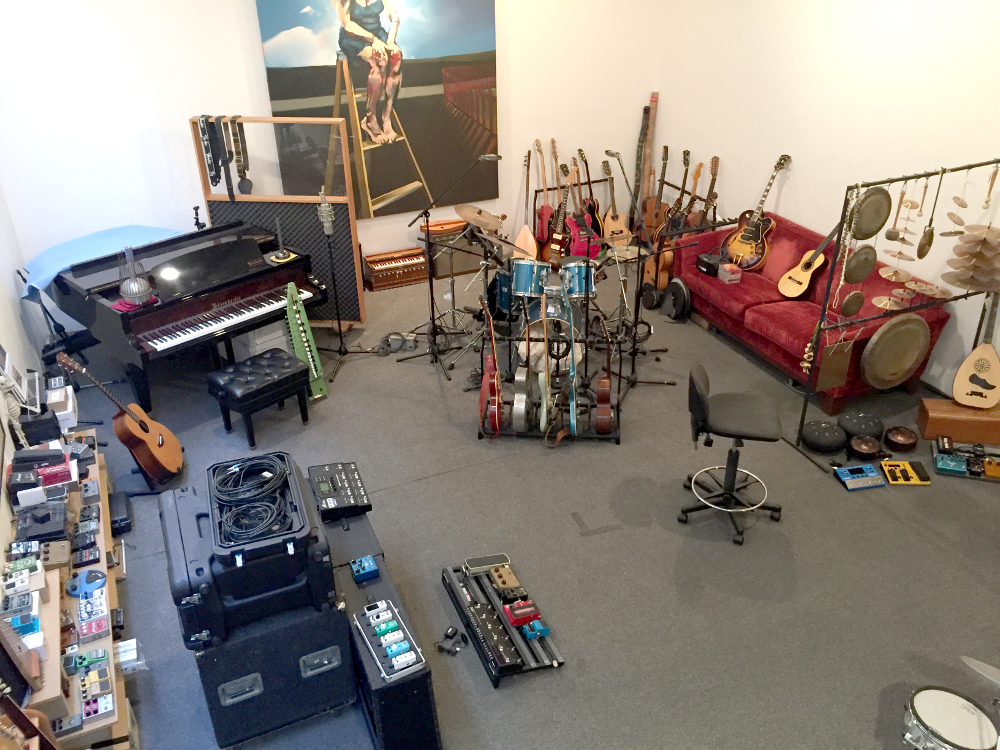
Here’s where it happens: Summers recorded the new album at his private studio in Venice Beach, CA (all studio photos by Dennis Smith)
In the Continuum
If you could go back and tell a decades younger version of yourself some wisdom or insight about recording, what would it be?
I started as a kid, of course, with a little acoustic guitar that only had five strings, but of course I was besotted with it and, to me, it was the machine of wonder. I was totally enthralled to get this tired, worn out little Spanish guitar when I was like 12, but that was it. The page turned and my future was set. I never even thought about anything else. So I think I was very lucky that that magic moment happened to me.
Of course, that’s where I started, like most kids, playing away. Eventually, two or three years later, I probably got a little English amplifier of the time. I think it was a Watkins Dominator. And struck at all that, and all we knew was volume, bass, and treble.
So making records, that was an impossible dream. Once we got going on it I was really interested particularly in the mixing process and how you created the sonic picture with the various instruments you put down, which goes back to the days of two-inch tape and all the rest of it. Of course, I was always interested in the actual mix and would have suggestions, but in terms of myself having a hands-on operation, that faded because it got beyond me. It became more like a specialist thing, but we all know the moves. We’ve been through all of it.
I’ve been on Pro Tools for years but went through, of course, my own studio to tape. Then there’s the audio cassette things. I went through all that.
The ADATs.
ADATs. Exactly. We all did that. I’ve been through all the various moves, but Pro Tools has been great for years, and we’re just about to upgrade our Pro Tools.
But, what can you advise someone? Because obviously I think you have to take it as a given that you’re going to try to have state-of-the-art recording. The more important thing is to have a sense of music and to make the right aesthetic judgment, and it’s all to do with perception. You got it on Wednesday, and you go, “It kind of sounds like crap”. You go back on Saturday and suddenly it’s marvelous, or the other way around.
I think it’s very important to distance yourself from things and hear it in a different context. When I finish recording tracks, I like to play them in very different contexts: Works in the car, someone else’s house, in the kitchen, at a party. I like to move the context around and try it, ’cause it suddenly gives you a whole other take on it. It’s very important. Could be, “Hey, you know what? The bass is too loud,” or “The bass line’s not working,” or “I don’t think the snare should be right there” or “Yeah, the whole thing’s very nice but there’s too much reverb”. These are things that you know out of years of working at recording.
They are technical and aesthetic at the same time. There’s two things. One is the music itself. Is it important? Who do you want to be as a musician? And all that. These are the big questions. And then there’s questions about the style of the recording or the track. Do you want massive echo? Do you want to make a big Phil Spector sound, or do you want it really dry and in your face?
There’s basic things like, OK, you want to get a really good bass drum sound, maybe send a bit of time on that, because it’s much easier than it used to be. And there are technical tricks now with compression you can do that you didn’t used to be able to do. And of course you can quantize, you can change where a note is in space, you can change the note itself. There’s all these things you can do now that would’ve been amazing years ago. And basically, with Pro Tools and that, what’s happened is that all the things that we dreamed of all those years ago are now possible.
So you take advantage of them. That doesn’t make recording fake — you’ve still got to play your ass off, whatever it is you’re gonna play, and be inspired — but there’s a little more freedom than there used to be, especially compositionally, because of this. It’s brilliant.
Conversely, is there anything you wish you could perhaps unlearn, when it comes to the recording process?
That’s an interesting question. Unlearn … Well, the thing is not to think you know it all. I think, really, in the spirit of creativity you have to be very vulnerable and open to mistakes, and errors, and things that just come out of the side ways.
When I’m in my studio, which is like the magic paintbox ’cause I’ve got all my stuff in there, every kind of guitar pedal ever made, I think. And amps, various amps, and fractals, and Roland VG-99, all this stuff. I’m pretty familiar with it, and with a lot of equipment.
Between me and my engineer, Dennis Smith, we’re fairly disciplined and we created a book that’s got a great deal of notes about what the devices, what the gadgets do. “What was that one? I can just look it up.” That’s important because people take a great deal of time to make these things, and it’s getting really good these days. They’re not novelties anymore.
So we’ve created a book of notes where I can go in and go, “Oh yeah. Wait a minute. That one. Remember that one? Now that was great, that might work here.” So we have to have a set of references to go back to, to try things in the spirit of whatever it is that we’re trying to record.
That helps, so that I’m not in a fog all the time. “Gosh, what does this do?” “I have no idea.” “All right, plug it in. Let me have a go.” I can look it up and go, “No, that wouldn’t be right.” So I have a battery of stuff, and I’d like to keep it fairly experimental with all that.
A Life In Studios: From the Police to Personal
You had the opportunity to work in the best studios with the best producers of the time when you were with the Police. Which facilities and experiences stand out from that time?
Well, they all stand out in different ways. I mean, it’s a bit of a trip actually because we only officially made five records, plus our loads of other reissues, and two live albums, which is kind of great. Obviously going to the Caribbean and recording there two times in row [for Ghost in the Machine and Synchronicity], at studios where everybody wanted to go back in the day was a wonderful experience, and a very good studio.
So state-of-the-art, AIR Studios [in Montserrat]. We had Hugh Padgham with us. So that, of course, was great fun and a very good studio, if somewhat of a distraction, but it was truly the rock star lifestyle. I think we enjoyed it. The joke was we went there for six weeks, which is a very small amount of time by today’s standards, and we were done in about a week, very fast to record.
But then of course I do rather cherish the very early stuff like the first album, which we recorded out in a little studio outside of London called Surrey Sound, in a place called Leatherhead — we were only allowed in at the weekends free. We could get Sunday off, that’s how we made the first record. It took us six months … Not six months to make it, obviously, we probably could’ve made it in a few hours, but we sort of remodeled the band over the period of that time until we ended up with the Outlandos d’ Amour record.
So there’s a lot of affection for that moment because we’re obviously right at the start of our career. There’s a lot of innocence and, not naivety, but innocence and passion and absolute determination to prove it and make it against all odds.
Is your studio in your home?
No. I have two set-ups. I have a lovely little building at the end of my garden which actually looks out over the ocean. It’s very nice. I have guitars and stuff there, and some small recording device. So I often start things down there, work them out. That’s a private place where I can go and be on my own and do stuff.
Then my real studio is in Venice Beach. We’ve got a great room where I’ve recorded for years, and it’s not really baffled. The room itself has a great drum sound. We have equipment set up at one end for the Pro Tools and everything. It’s kind of the way it is. It’s fairly chaotic at the moment. We’re in a bit of a mess. There’s three drum kits in there and guitars everywhere, but it’s lovely. It’s the real deal. It’s very friendly, a great atmosphere. I would hate to leave it, really.
Are you the only one who uses it?
Oh yeah. I don’t let it out. I don’t want anyone else that would violate it. It’s not a commercial studio — it’s a private fantasy.
I set it up in the late ‘80’s. I’ve done everything in there: Film scores, bands, many records. Everything. That’s been where we go. All my stuff’s down there, guitars, and it’s great to have.
In what ways would you say your studio has evolved since it was first established, to help you achieve your vision?
The only thing that really changed, to be honest, is the recording equipment. When we first got in there we had this big room with a great sound. It’s a whole building so there’s other stuff upstairs. I keep all my photography stuff upstairs and the music downstairs, basically. I think we did put one sound thing on one wall so the neighbors wouldn’t get blown out of the water.
Once we set up this “L”-shaped thing for all the gear to go on it didn’t really change much apart from the equipment itself, which of course went from two-inch tape at the beginning with a Studer and all that into the ADAT era. Then that ended, then we got into Pro Tools.
This Pro Tools we have now has been up for about eight years, so we’re just about to change it. We’ve been a little bit frightened to do it, but I guess we have to do it. Oh, god! We’ve had it on 8.5 and we’re gonna go up to 12.5.
Advanced Guitar Tracking Techniques
I assume that capturing your guitar sounds to the fullest extent is priority Number One. What are the techniques that you and Dennis have developed over the years to do that?
There’s all sorts of things. I play the same Stratocaster for everything. At the beginning, I’ll sketch things out and I’ll mostly play that guitar if I’m working on things because it works great. And I can play it through the Roland VG-99 [guitar modeler] and get a great approximate sound. That works fine in the early stages.
We get all the way through a track, and I’m building the pitch of the sonic things that it has, and so on and so forth. Then, at some point, I go, “Right. Now let’s really look at the guitar sound. Let’s just see if I banged all this down. Let’s really consider it tone-wise, sound, and everything”.
So then I can’t honestly say to you that I’m gonna get out every amp I’ve got, like a ’59 (Fender) Tweed and all this business, vintage amps, because I do have a few of them. And I know some moves on that, particularly if I use a really old 1954 Strat through a bluesy amp, I get a certain kind of tone.
I’ve got those dialed up, that I can do certain things with them. Or you can play through these amp modeling devices that are really getting pretty incredible. The VG-99 has done great service to me. There’s one sound there that is a marvelous lead guitar sound, in fact I think the first track on the album called “If Anything”, the lead guitar is played on one sound we call “150” on the VG-99.
But, the other contender in terms of amp modeling and all that, is the Fractal [amp modeler] of course, which is fantastic. The amp modeling thing has gotten so good now, and then we can EQ it, reverb it – you find a way to make it sit in the track. I also do many other things, because I have a lot of devices that I like to play through that will color the sound.
What pedals does that include?
I use different pedals. I use the Lo-Fi Junky a lot. There’s one called a Love Pedal, which I like a lot. I try to make the sound have something different, not just straight ahead like fuzzy lead, but take time in coloring it. It might be changing guitars up. Sometimes, I often play solos on my Les Paul, partly because of the wideness of the signal and the speed of the Les Paul as a soloing instrument. Other times I like the Strat and I like to use the whammy bar.
On this record, Triboluminescense, I’m playing solos with the guitar turned down two whole pitches, which gives it a whole other thing. Of course, you have to adjust where you play on the neck to cover that. And there’s one solo I play that’s all capo at the eighth fret. But I know all these things, I don’t have to learn them, I know these moves. I’ve been doing it for a long time. These days I like to de-tune, use the capo or not, and play.
I’ll try to push my guitar through different things until I find I’m getting something that’s intriguing to the ear. Any sort of non-standard, basically, is the way I like to go.
There are so many intriguing sounds on this record. What’s a song on Triboluminescence that you feel best exemplifies your latest approach to creativity in the studio?
The (title) track itself, “Triboluminescence,” it starts off with this sound I started to embrace and to me, it’s like the Balinese Gamelan Orchestra. I find that I’m attracted to these hammered Gamelan sounds. I’ve traveled a lot in Asia, particularly in southeast Asia, so these are sounds I’ve infiltrated over the years.
It’s part of my search, or push, towards getting something really fresh that doesn’t sound just like an old standard, because jazz is incredible. It’s not like standard piano quartet music, but rather it’s got these exotic other-worldly qualities. And then you put these improvising solos against that and you start to have something that is the confrontation between the two, becomes interesting sonically. So I’m very about setting up these loops one way or the other.
I think I like “Triboluminescence” because it’s got that very cool, great solo which I achieved in a certain way. It’s about almost nine minutes because I totally got into the groove with it, but it was because the beat was so strong. But then a track like “Pukul Buny Bunye” was set up with two de-tuned guitars played with drumsticks at the backing.
So there’s nothing ordinary here at all. You can’t play like that on a standard guitar. To me, it was playing both at the same time, two different guitars on two different chairs, played with drumsticks, and weird, radical tunings. And that gave me that Gamelan thing that I was looking for. The techniques to get some of this music are absolutely non-standard.
Loving the Loop
Loops played an important part throughout the record. Why are you gravitating more towards loops for strong structure?
I love the sound of loops, a lot of crazy, very seductive, beautiful sounds. In fact, the double-vinyl release will have another nine tracks on it that the CD doesn’t have, which are all almost loop-based.
The thing with doing loops is there’s often a lot of surprises. “Oh my god. I didn’t know that was gonna come out like that. Lock it.” And you lock it in and record it quickly. So it’s great fun, but again, with the loops, it depends on what you put into the loop to begin with. You usually put just a straight guitar sound. I’ve already got it by doing something a bit warped. So, the loop will inherently be interesting, then you can obviously put it up an octave, drop an octave, speed it up, play it at half time, play something against it.
You start getting into a really interesting music place you can’t really achieve any other way. You can’t really play a piano backwards, or at half speed. So it creates a very interesting sonic landscape right off the bat. You’ve got something that’s sort of magical right from the get go if you already like it.
It’s not everything I do, but I have found with a lot of these tracks that, in terms of where an organ or a piano might have been backing you up with the harmony’s chords, I’m starting to use loops. I think it takes to it another place.
Are the loops that you use one’s that you recorded yourself, or will you also work against loops that you find in loop libraries?
No. I wouldn’t ever do anything like that. I make my own loops.
Do you have a particular device that you like to use for making loops?
Well, there are many out there. I’ve got five or six. Obviously everyone knows the Line Six [JM4 Looper], which was always very good. The one I’m using right now is the Roland 505 [Loop Station] which I think is the best one ever, and some other Roland ones too.
How would you characterize your working relationship with your engineer, Dennis Smith?
He comes from the same town as me in England, so two English blokes working away together. Well, we’ve been together for years. We’ve done many recordings together so he knows me very well. He knows my playing. Very much so, in these records, I listen to him. He’s extremely musical and has very good instincts about music.
It’s like he gets it. For some of this music, in a way, it’s like trying to tell us a joke that’s a bit abstract. People don’t quite get it. He gets it. He understands. He’s a highly intelligent guy. He gets some of this abstraction, and then there’s good abstraction and there’s bad abstraction. He’s the audience because I make these records alone. These last two records [Triboluminescence and 2015’s Metal Dog], there’s no one else on them. That’s it.
So, yes, great technical skills. He totally is a technician in the sense that he intuitively seems to understand technology whereas I would get completely lost. I let him take care of that side and then all the creation of the music and sound comes from me.
That’s the way we work, and it works very well. If he stops, that’s the end of my career I suppose!
Landmarks and New Horizons
You recently received the 2017 Roland and BOSS Lifetime Achievement Award. Why is that a meaningful milestone for you?
it was always good with Roland. When I did my acceptance speech at the NAMM show, I said, “There is a certain amount of truth to this, and honesty, because when The Police were starting out, I used all the Roland gear, and we had a very nice relationship.” They used to run ads with me and all that, but of course I was one of the first guys using the guitar synthesizer, and taking that out to the massive public that we had.
I used the Chorus pedals, the Roland Chorus Echo. I used everything they made for the guitarist and have continued to over the years. I’ve got loads of BOSS pedals and all the rest of it. I kept everything. So I actually feel that it’s very sweet, it’s very nice and they’ve been very good to me. I’ve got two of the Roland drum kits which I think are really great. Amazing. And loads of pedals. I’ve got the 505 Looper, plus a lot of others, the Guitar Synths. Mostly anything for a guitar that Roland makes I have, including all the new stuff.
So I think it’s been a genuine, very honest thing. Luckily, I’m a famous guy that can bring something to the table because I do use the gear. I use the VG-99 extensively. So it’s not one of those kind of things which can happen, if you have a long enough career where it’s not really true and you feel a bit guilty about it. I actually use all the stuff. I’m very happy to. It’s very nice to get the award. Why not?
Andy, here’s my last question: How do you see the shift in available tools opening up new creative options for guitarists and the people who record them?
I think there’s a certain amount of onus on the recording musician to understand, to some degree, the technology and what you can do with it. You don’t have to become the engineer, but you need to get some sort of working knowledge because it can open up your creativity.
It’s great for guitar players though because, literally, you can almost do anything. But that doesn’t mean to say you should not hone your skills as a guitarist, of course you should. You should become a total maniac on the guitar and be the best you can possibly be.
There are incredible devices for the guitar now, and there’s so many people into making the guitar do anything it could possibly do. Things are coming through.
David Weiss
Please note: When you buy products through links on this page, we may earn an affiliate commission.







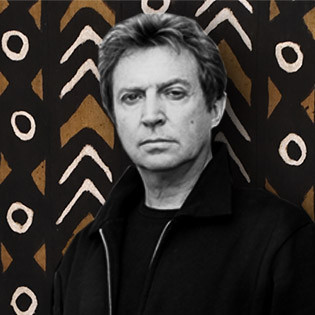
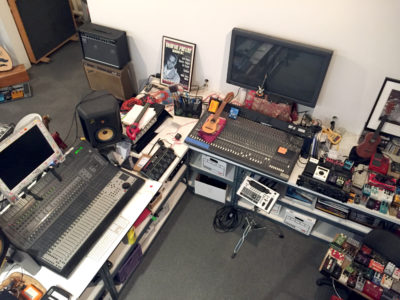
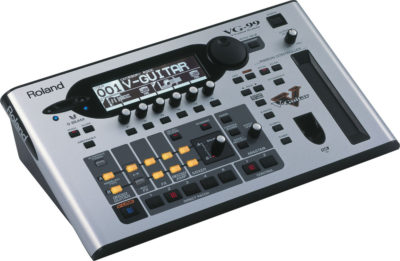
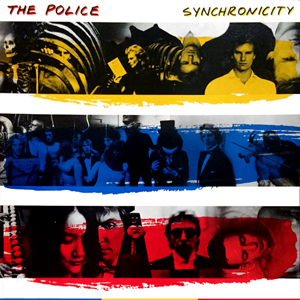
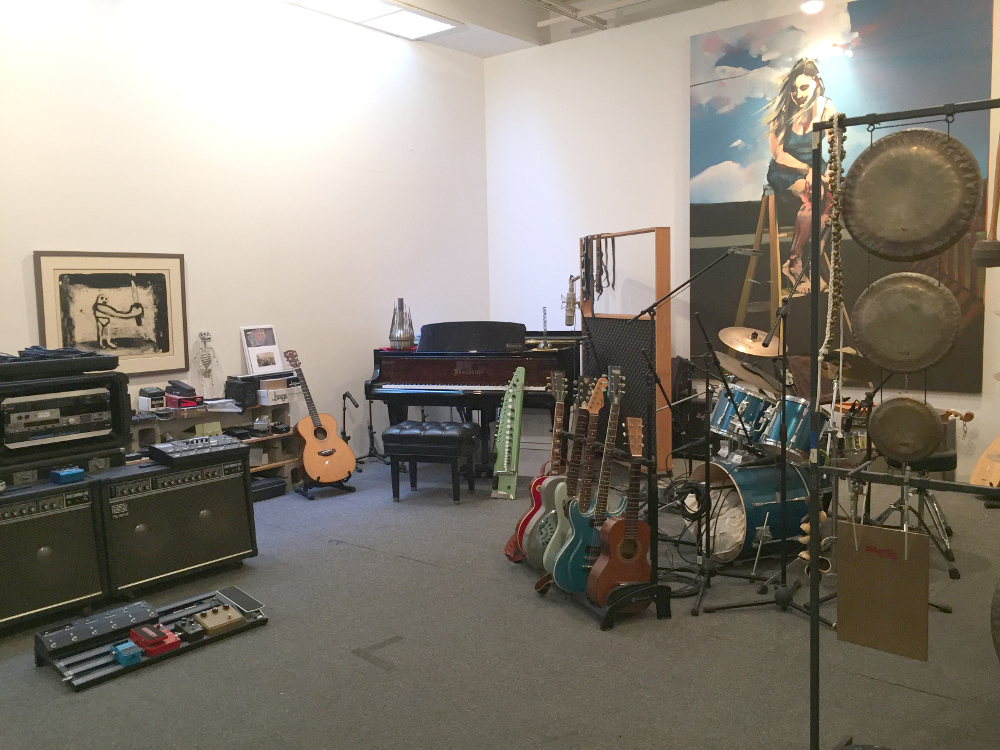
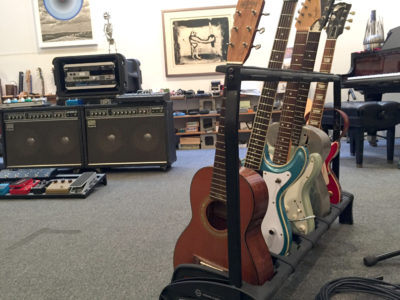
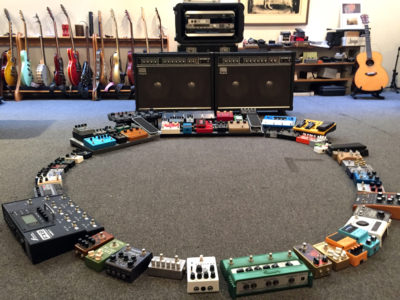
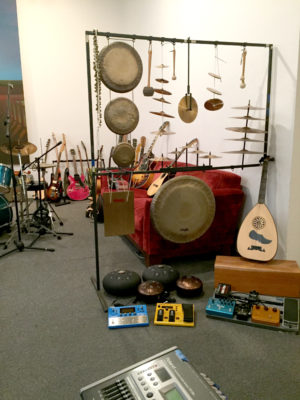
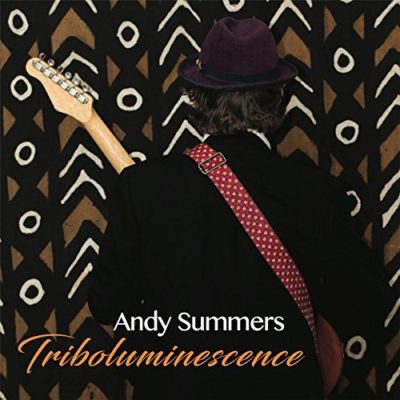
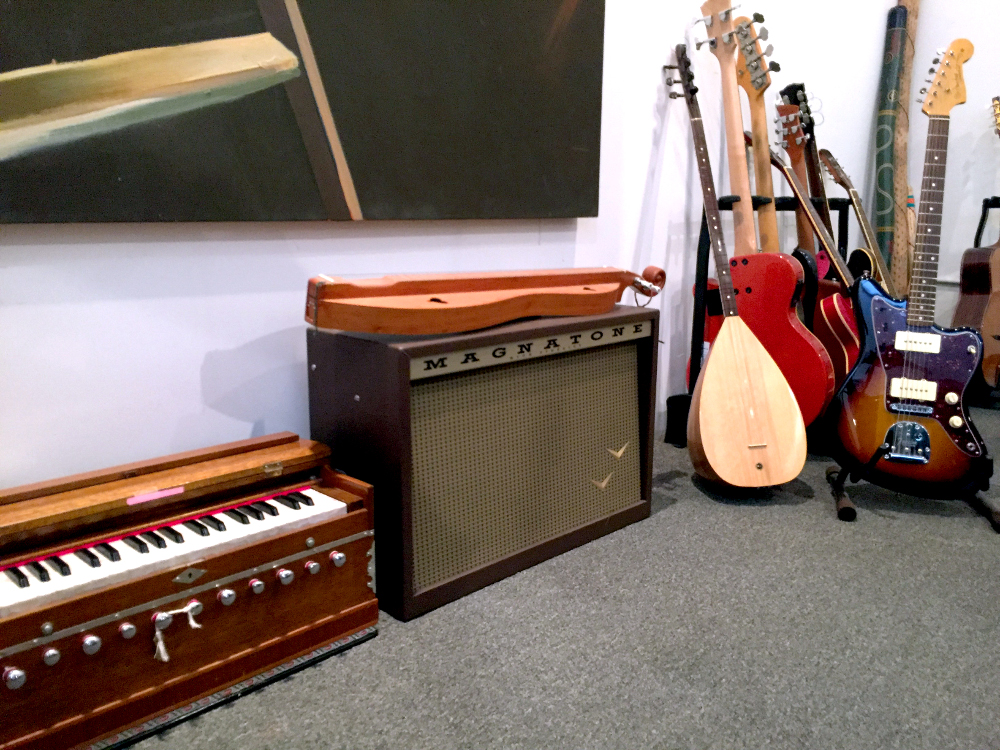
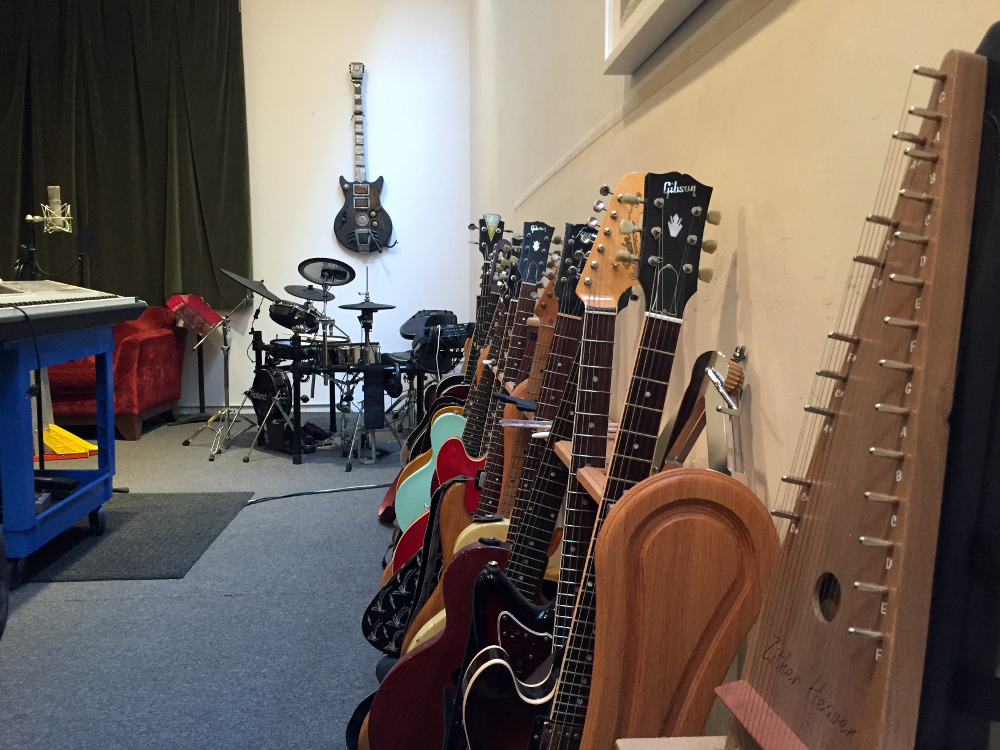
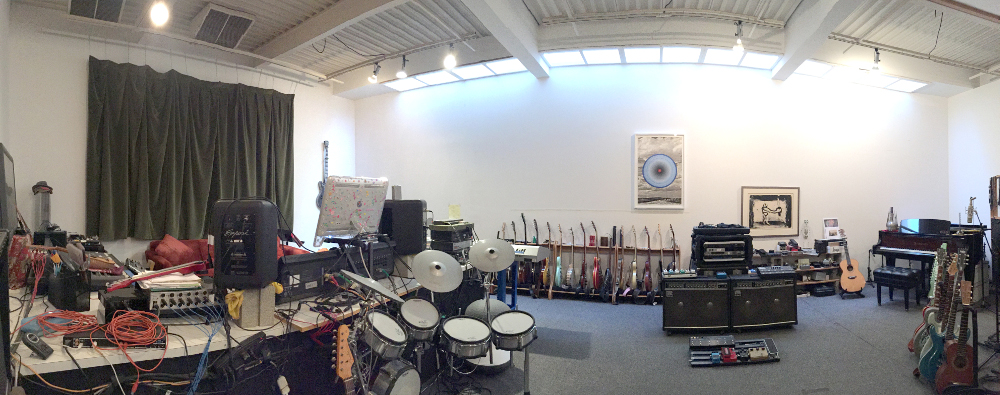
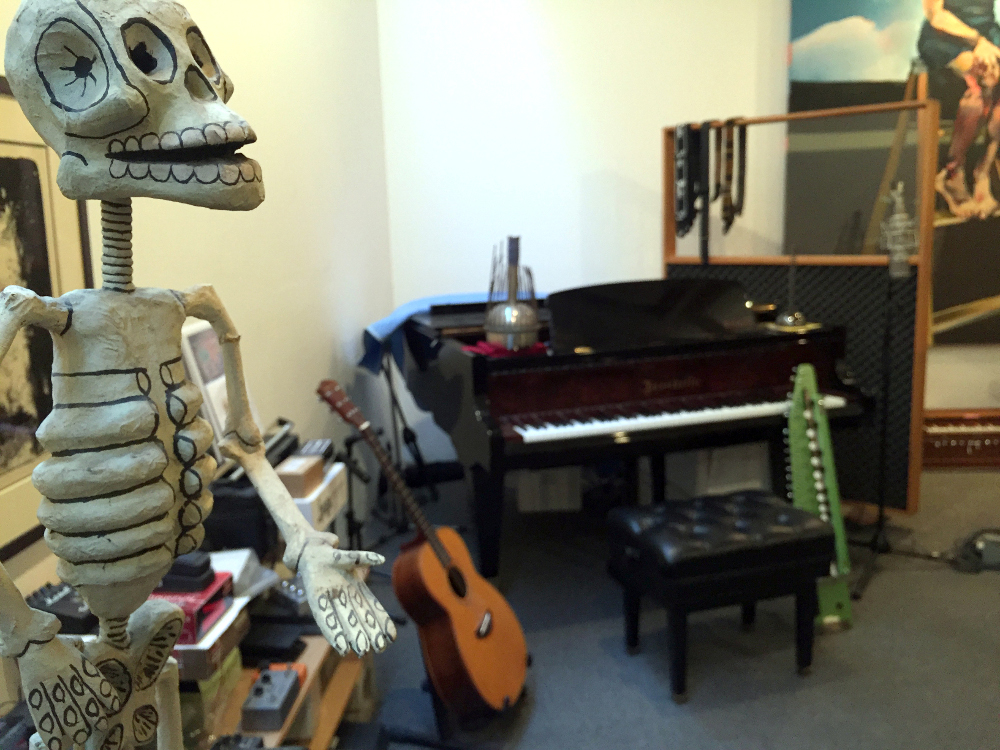
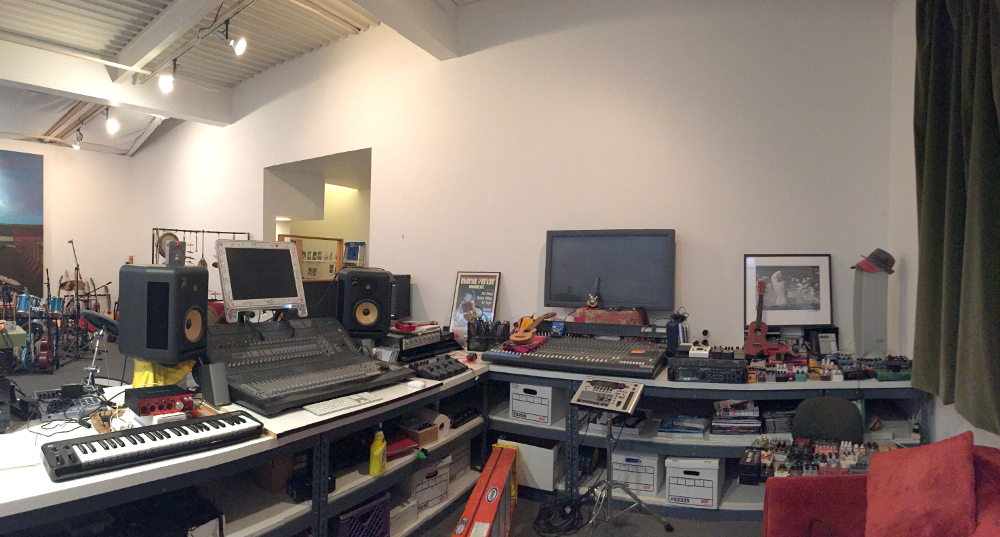
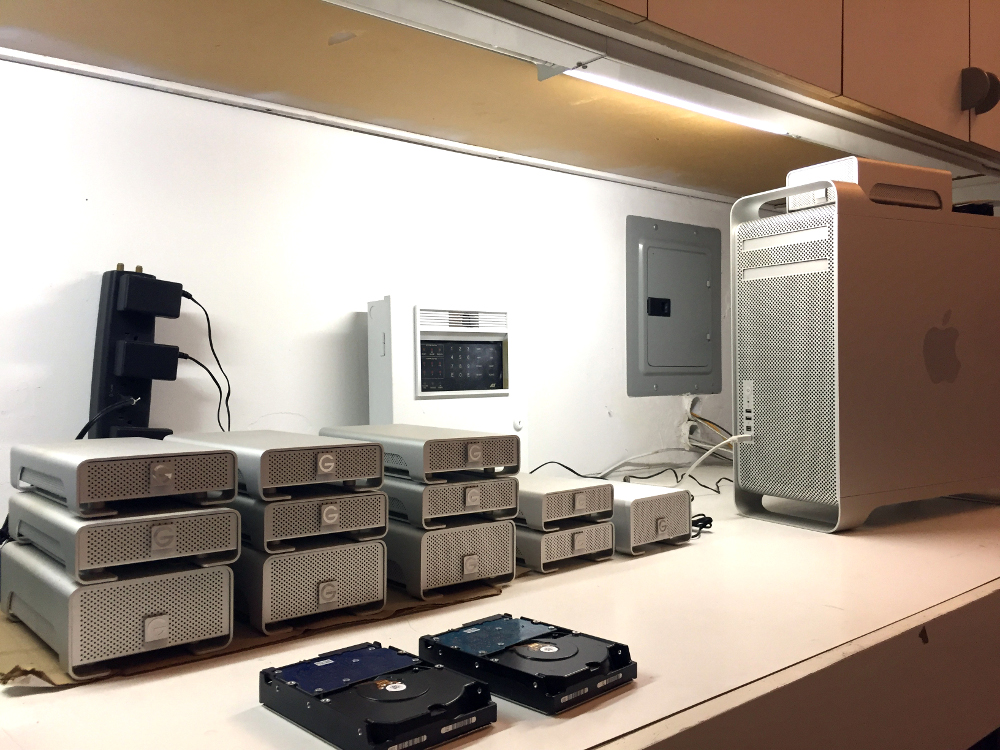
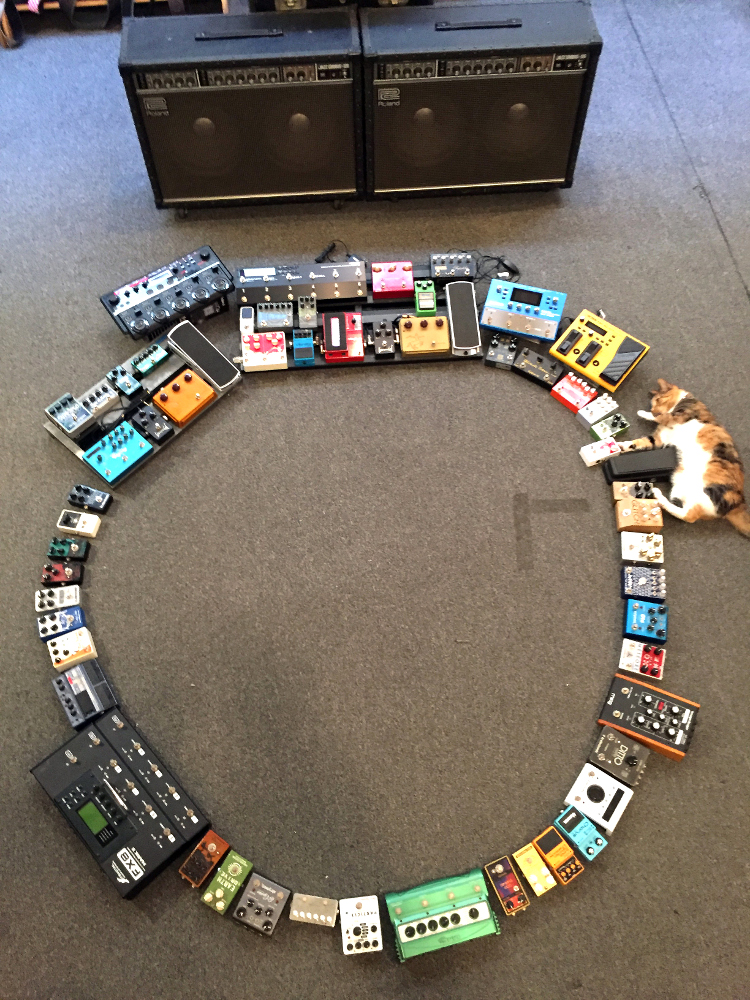
Mad Pierrot
May 5, 2017 at 11:39 am (8 years ago)Definitely avoided saying anything about the Police…